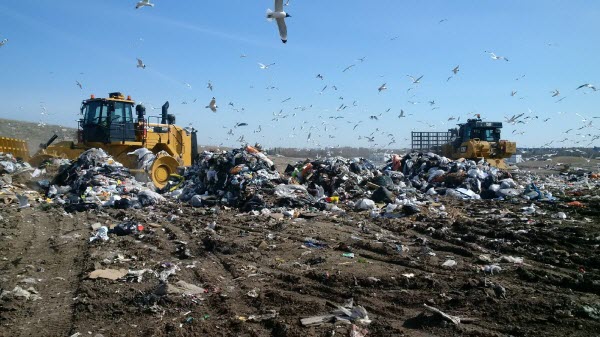The City of Saskatoon does all of its business through the public procurement process. The purpose of the recommendation was to identify the equipment required for the job for procuring proposals.
Finning Canada submitted a proposal and was awarded the contract as Cat’s landfill equipment fit the bill. Todd Kennedy, Finning sales rep in Saskatoon, worked with Jason Kennon, manager of fleet services for the City of Saskatoon to ensure that their specific needs were met. One of the requirements was meeting the emissions standards. “Both the D7E dozer and 826K compactor are Tier 4 Final,” says Todd. “They are the lowest emission standards in their class. It’s a greener machine and that’s also going to lead to greater fuel savings for the City.” According to Jason, the other component is the total maintenance and repair (TM&R) package. “The five-year TM&R package means we don’t lay a wrench on the machines, Finning handles it all,” said Jason. Scott adds, “We pay a standard hourly rate for maintenance, so if we plan to run our machines for 3,000 hours, we pay a set price. This allows us to keep our maintenance costs in check and lowers our risk as we don’t have any spikes in maintenance costs, and if there is a major repair required, it’s covered by Finning.”
As this is a unique application, unique machines were required for the job. The D7E and 826K the City purchased for waste management are specifically designed for a landfill application. This was really important says Jason. “With our harsh environment, we had to go with a dedicated landfill application. From past experience, if you get a machine for your specific application, you are that much further ahead.”
When working on a landfill site there are certain requirements. “You need the landfill application,” says Scott. “The D7E dozer for instance comes with a low ground pressure undercarriage that widens the stance and provides a channel between the tracks and the machine so waste can flow through more easily. The blade as well is designed to push waste, not soil. It is much lighter, so it can go higher, and it’s not solid at the top, there is a mesh trash rack that prevents trash from spilling over the side of the blade”. And this is no ordinary blade. According to Todd, “The push blade on a regular D7E is on average about four and a half feet tall, the one customized for the landfill application is close to nine feet. It’s a real beast.”
The 826K is also uniquely designed, but for the compaction of trash. “The spikes on the wheels level the garbage and pack it down at the same time, so they can compact garbage more efficiently,” says Scott. “This is because the Cat wheel tip is specifically designed to keep the compactor moving, keep the wheels from getting plugged with trash and allows the wheels to sink into the trash so the machine can maintain traction and stability while it’s compacting,” adds Todd.
The pressurized cab in these two machines was also specifically designed for the application. In this case, the machines are not only climate-controlled for comfort, but designed to keep the environment out, so it’s easier on the nose. One of the other features that was a must-have for winter operation was the addition of a Proheat system which cuts down on engine idling in the winter time. “The Proheat system is an anti-idling feature that allows us to shut the main engine down, without the machine getting cold. It is comprised of a small diesel heater that keeps the main engine heated to 160 degrees.” says Jason. “It basically keeps the engine and cab warm throughout the day and ensures the engine re-starts which is really important given our winters in Saskatchewan.” adds Scott.
The machines have been part of the City of Saskatoon’s waste management fleet since the spring and have been operating to expectations. According to Jason, “The D7E went into operation in April of this year and as of August has close to 1,000 hours on it, the 826K has about half that. We kept the older machine as a back-up, but so far haven’t had to fire it up.”

Share This